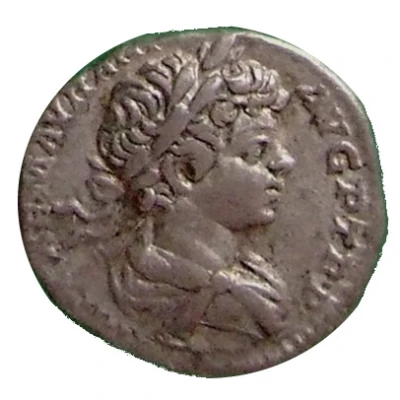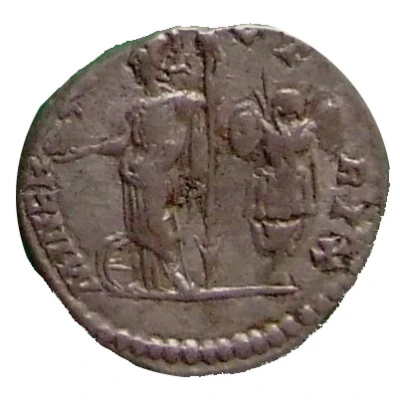


© Institute of Classics/University of Graz
Aureus - Septimius Severus DIS AVSPICIB TR P II COS II P P; Hercules and Bacchus
194 year| Gold | 5.9 g | 20 mm |
| Issuer | Rome › Roman Empire (27 BC - 395 AD) |
|---|---|
| Emperor | Septimius Severus (Lucius Septimius Severus) (193-211) |
| Type | Standard circulation coin |
| Year | 194 |
| Value | 1 Aureus = 25 Denarii |
| Currency | Denarius, Reform of Augustus (27 BC – AD 215) |
| Composition | Gold |
| Weight | 5.9 g |
| Diameter | 20 mm |
| Shape | Round (irregular) |
| Technique | Hammered |
| Demonetized | Yes |
| Updated | 2024-10-05 |
| Numista | N#269061 |
|---|---|
| Rarity index | 100% |
Reverse
Hercules, naked, on left, standing right, holding club set on ground in right hand and lion-skin over left arm, and Bacchus, wreathed, naked, on right, standing left, emptying oenochoe in right hand over panther, seated left, head right with open mouth, and holding garlanded thyrsus in left hand.
Script: Latin
Lettering: DIS AVSPICIB TR P II COS II P P
Translation:
Dis Auspicibus. Tribunicia Potestate Secunda, Consul Secundum, Pater Patriae.
The protector gods. Older of tribunician power for the second time, consul for the second time, father of the nation.
Comment
Mass varies: 3.28–7.18 g;Example of this type:
Institute of Classics/University of Graz
Source:
Online Coins of the Roman Empire (OCRE)
Interesting fact
The Aureus coin featuring Septimius Severus (DIS AVSPICIB TR P II COS II P P; Hercules and Bacchus) is interesting because it highlights the Roman Empire's use of propaganda through currency. The coin's design features Hercules and Bacchus, two deities associated with strength and fertility, which aligns with Septimius Severus's efforts to promote his military victories and economic reforms. Additionally, the coin's inscription, "DIS AVSPICIB TR P II COS II P P," translates to "Divine Augustus, father of the country, second time consul, second time pater patriae," which further emphasizes the emperor's divine status and legitimacy. This coin serves as a prime example of how currency was used as a tool for political propaganda in ancient Rome.